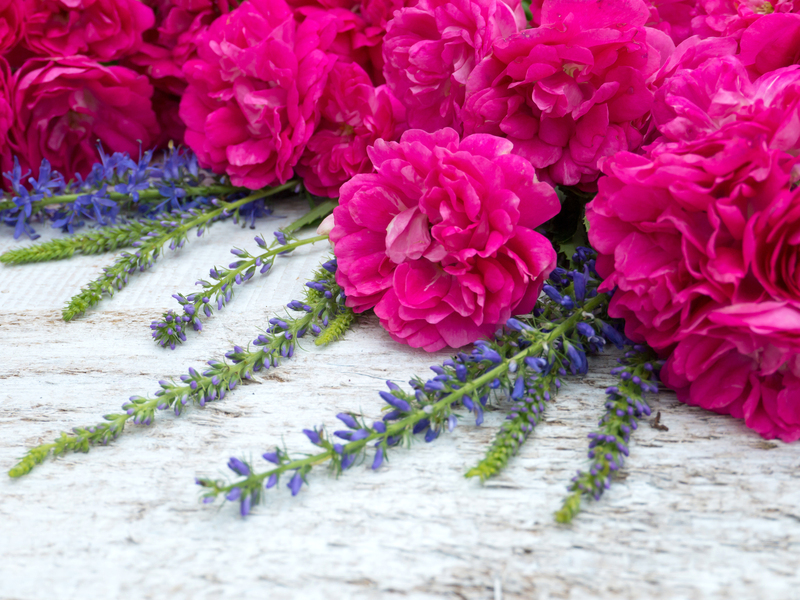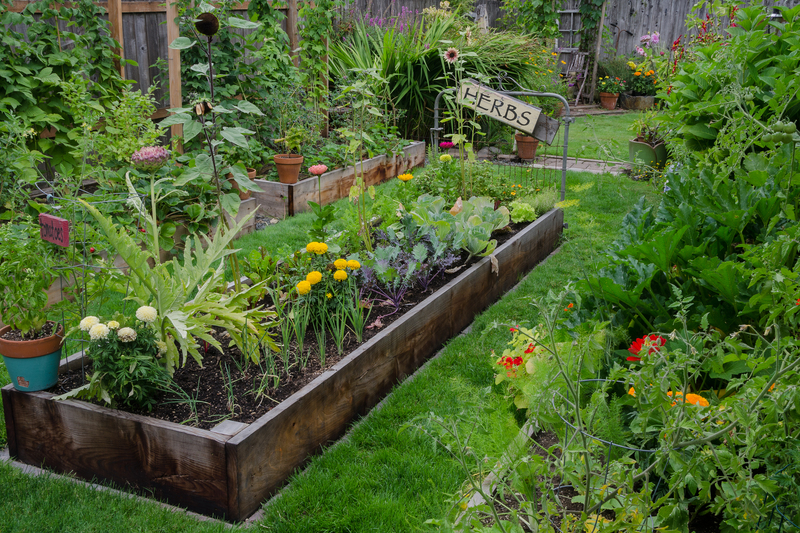Optimize Your Garden's Beauty with These 3 Weed Solutions
Posted on 23/09/2025
Optimize Your Garden's Beauty with These 3 Weed Solutions
Every gardener dreams of a lush, vibrant garden free from pesky intruders. Yet, few things jeopardize a flourishing landscape more than rampant weed growth. If you're eager to maintain healthy plants and maximize your yard's aesthetics, it's essential to master the art of weed management. This comprehensive guide explores the top three solutions to effectively control weeds and enhance your garden's natural beauty. Dive in to uncover expert tips, practical advice, and the most impactful weed-beating techniques to transform your outdoor haven.
Table of Contents
- Why Weeds Harm Your Garden
- Weed Solution #1: Mulching
- Weed Solution #2: Manual and Mechanical Removal
- Weed Solution #3: Safe Herbicides
- Combining Methods for Maximum Results
- Pro Tips: Prevention & Maintenance
- Frequently Asked Questions on Weed Solutions
- Conclusion: A Stunning, Weed-Free Garden Awaits
Why Weeds Harm Your Garden
To optimize your garden's beauty, you must first understand the impact of weeds. Weeds are not merely unsightly--they compete vigorously with your chosen plants for vital resources like sunlight, water, and nutrients. This competition can stifle plant growth, reduce yields, and even invite pests and diseases.
- Block sunlight and limit photosynthesis.
- Siphon water and nutrients from soil, depriving preferred plants.
- Harbor insects and plant diseases, amplifying problems.
- Disrupt garden aesthetics, diminishing the space's visual appeal.
Weed Solution #1: Mulching
How Mulch Works as a Weed Solution
One of the most reliable methods to prevent weed growth is mulching. Mulch acts as a natural barrier, suppressing weed seedlings before they can sprout to the surface. It also locks moisture into your soil, regulates temperature, and enriches the earth as it decomposes.
- Blocks Light: Mulch prevents sunlight from reaching weed seeds, hugely reducing germination.
- Improves Soil: Organic mulches like bark, straw, or wood chips break down to nourish the soil.
- Retains Moisture: Conserves water, ensuring your preferred plants always have enough.
Best Mulching Materials
Choose the right mulch to optimize your garden's appearance and weed defense. Here are top choices:
- Wood chips: Long-lasting, attractive, and excellent for flower beds.
- Bark mulch: Durable and aromatic; great for larger landscapes.
- Straw or hay: Perfect for vegetable gardens; promotes soil enrichment.
- Pine needles: Acidifies the soil--a good fit for azaleas and blueberries.
- Compost: Provides nutrients as it breaks down (but keep weed seeds out!).
How to Mulch for Weed Suppression
- Weed first: Remove existing weeds by hand or with tools.
- Apply mulch: Spread a 2-3 inch layer around plants, keeping it a few inches from stems/trunks.
- Replenish annually: Top up mulch to maintain its protective benefits.
Pro Tip: Pair mulch with a weed barrier fabric for the ultimate defense against unruly plants.
Weed Solution #2: Manual and Mechanical Removal
The Classic Approach to Weed Management
When it comes to optimizing your garden's beauty with weed removal, sometimes traditional methods reign supreme. Pulling or cutting weeds by hand or with specialized tools ensures you eradicate the problem at the root and minimize chemical exposure in your landscape.
Effective Tools and Techniques
- Hand-pulling: Best when soil is moist and for shallow-rooted weeds.
- Hoeing: Great for larger beds or rows--slice off weeds just below the surface.
- Weed forks and dandelion diggers: Pry out taproots to prevent regrowth.
- Flame weeders: Use heat to kill weeds in driveways or paths (use caution!).
Step-by-Step for Manual Weed Removal
- Identify: Focus on invasive or rapidly spreading weed species first.
- Dampen soil: Water your garden before pulling to loosen roots.
- Remove completely: Grasp the weed near the base, pull slowly, and remove as much root as possible.
- Dispose properly: Compost only if weed seeds or roots are not viable; otherwise, dispose of away from garden areas.
Why This Method Works: Physical removal guarantees weeds don't compete with your prized plants. It's eco-friendly, and with routine checking, keeps infestations minimal.
Weed Solution #3: Safe Herbicides (Use with Care!)
Choosing the Right Weed Killers
While mulching and manual removal are natural solutions, some gardens face persistent or severe weed problems. In these cases, selective herbicides and natural weed killers can provide targeted control without damaging your ornamentals or edibles. The key is to use products judiciously and responsibly.
Types of Herbicides
- Pre-emergent herbicides: Applied before weed seeds germinate; ideal for preventing outbreaks.
- Post-emergent herbicides: Used on visible, growing weeds; great for spot treatments.
- Non-selective herbicides: Kill nearly all plants they touch--best for paths, driveways, or clearing area for planting.
- Organic/natural solutions: Use ingredients like vinegar or clove oil for pet, child, and pollinator safety.
Safe and Effective Herbicide Usage
- Read Labels: Only use herbicides labeled for your type of garden (lawn, beds, edibles).
- Spot-treat: Target only identified weeds to minimize risk to wanted plants.
- Apply in calm weather: Prevents drift onto useful vegetation.
- Wear safety gear: Gloves, long sleeves, and masks protect you and pets.
Note: Always consider less-toxic or organic options before using synthetic chemicals, and follow all local regulations regarding herbicide use.
Combining Solutions for Superior Weed Control
For the ultimate weed-free garden, integrate multiple strategies. Here's how to optimize weed management:
- Mulch beds after weeding to block new growth.
- Hand-remove any persistent weeds missed by mulch or during the growing season.
- Apply spot treatments of organic herbicides only when absolutely necessary.
Pro Tips: Prevention & Maintenance for a Weed-Free Garden
Keep Your Garden Beautiful with Simple Habits
Maintaining a weed-free space takes less effort when you employ a few preventative measures:
- Plant densely: Crowded beds shade soil and leave little space for weeds.
- Edge regularly: Use barriers or edging materials to stop grass and weeds from creeping in.
- Water wisely: Drip irrigation targets your plants, not weed seeds.
- Monitor weekly: Catch baby weeds before they mature and go to seed.
- Rotate crops: In vegetable gardens, switching locations each year confuses weed cycles.
- Use clean compost and soil: Never introduce material tainted with weed seeds.
Bonus: Grow groundcovers as living mulches for continuous weed suppression. Try creeping thyme, vinca, or sedum for beautiful, low-maintenance greenery that chokes out competing weeds.
Frequently Asked Questions on Weed Solutions
How often should I reapply mulch?
Mulch typically lasts one year in high-traffic beds or two years in less-used spaces. Inspect depth each spring and top up to 2-3 inches as needed.
Are homemade weed killers safe?
Many homemade solutions (like vinegar sprays) are safer than synthetics, but still must be applied with care. Spot-test areas before wide use and never apply strong solutions to edible plants or sensitive ornamentals.
What's the best time of year to remove weeds?
Spring and early summer are ideal, catching weeds while they're small and before they seed. However, hand-pulling after a rain works anytime weeds are present.
Will mulching attract pests?
Most mulches deter pests, but avoid piling against stems or trunks, which can trap moisture and harbor bugs. Keep an inch or more away from plant bases.
Can I compost pulled weeds?
Weeds without seeds or aggressive roots can be composted. Never compost those that might regrow or spread; bag and dispose separately.
Conclusion: A Stunning, Weed-Free Garden Awaits
Optimizing your garden's beauty and health is achievable by mastering these three powerful weed solutions: mulching, manual or mechanical removal, and strategic herbicide use. By understanding their features and combining methods for lasting results, you'll enjoy a vibrant, thriving outdoor sanctuary all season long. With a customized weed control routine and a little ongoing attention, your garden will reward you with enduring color, healthier growth, and boundless visual appeal.
Ready to transform your landscape? Start today with these expert weed solutions and watch your garden's beauty truly blossom!
Want more gardening tips?
Sign up for our newsletter for exclusive guides, seasonal advice, and expert solutions to keep your garden weed-free and beautiful all year round.



